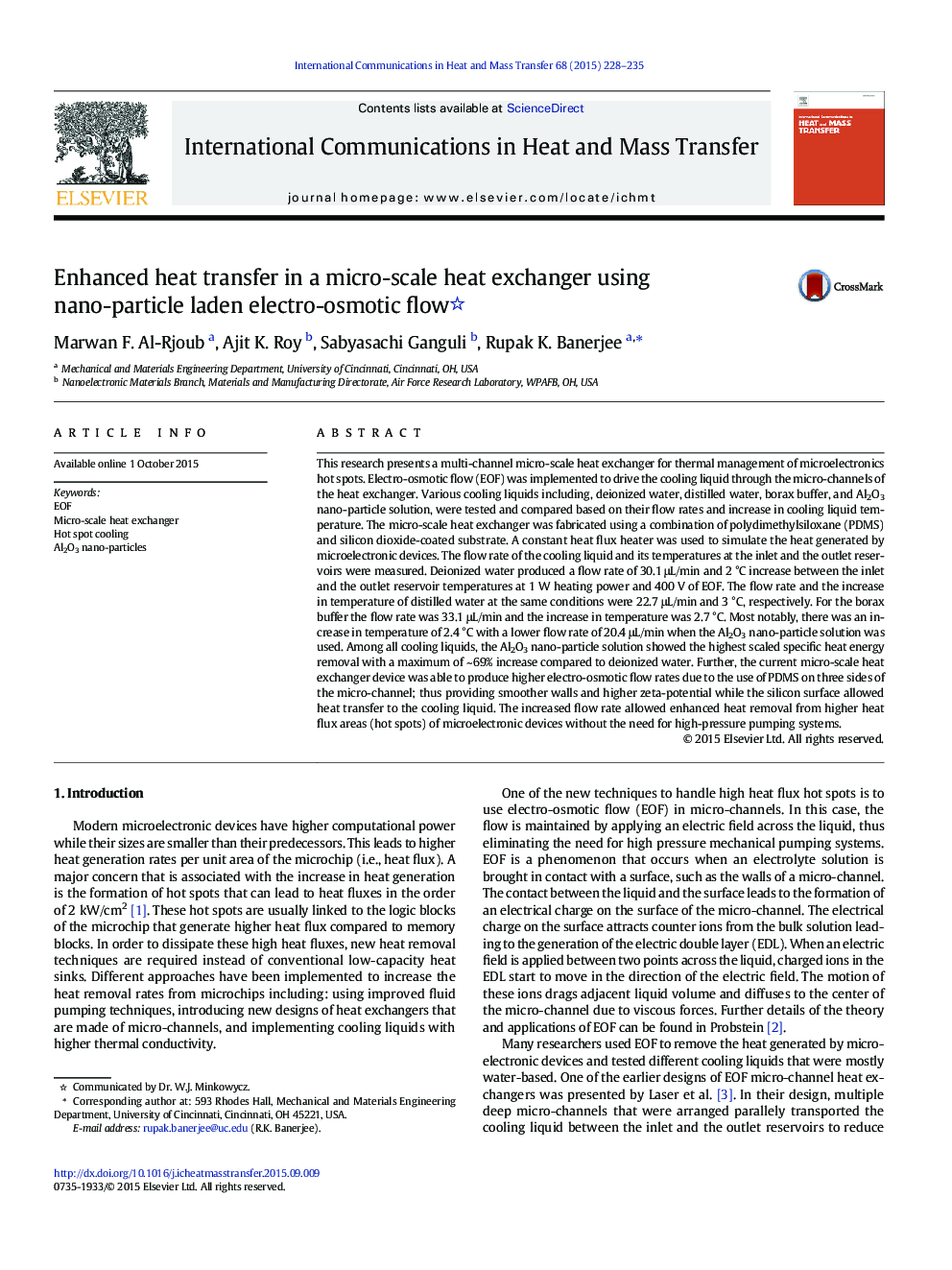| کد مقاله | کد نشریه | سال انتشار | مقاله انگلیسی | نسخه تمام متن |
|---|---|---|---|---|
| 653033 | 1457486 | 2015 | 8 صفحه PDF | دانلود رایگان |
This research presents a multi-channel micro-scale heat exchanger for thermal management of microelectronics hot spots. Electro-osmotic flow (EOF) was implemented to drive the cooling liquid through the micro-channels of the heat exchanger. Various cooling liquids including, deionized water, distilled water, borax buffer, and Al2O3 nano-particle solution, were tested and compared based on their flow rates and increase in cooling liquid temperature. The micro-scale heat exchanger was fabricated using a combination of polydimethylsiloxane (PDMS) and silicon dioxide-coated substrate. A constant heat flux heater was used to simulate the heat generated by microelectronic devices. The flow rate of the cooling liquid and its temperatures at the inlet and the outlet reservoirs were measured. Deionized water produced a flow rate of 30.1 μL/min and 2 °C increase between the inlet and the outlet reservoir temperatures at 1 W heating power and 400 V of EOF. The flow rate and the increase in temperature of distilled water at the same conditions were 22.7 μL/min and 3 °C, respectively. For the borax buffer the flow rate was 33.1 μL/min and the increase in temperature was 2.7 °C. Most notably, there was an increase in temperature of 2.4 °C with a lower flow rate of 20.4 μL/min when the Al2O3 nano-particle solution was used. Among all cooling liquids, the Al2O3 nano-particle solution showed the highest scaled specific heat energy removal with a maximum of ~ 69% increase compared to deionized water. Further, the current micro-scale heat exchanger device was able to produce higher electro-osmotic flow rates due to the use of PDMS on three sides of the micro-channel; thus providing smoother walls and higher zeta-potential while the silicon surface allowed heat transfer to the cooling liquid. The increased flow rate allowed enhanced heat removal from higher heat flux areas (hot spots) of microelectronic devices without the need for high-pressure pumping systems.
Journal: International Communications in Heat and Mass Transfer - Volume 68, November 2015, Pages 228–235
